|
What I love about the bush is the unexpected surprises…. You can spend 5 hours driving through the veld seeing very little, and then something amazing can happen just when you thought the day was lost. A couple of weeks ago, the Leopard ID Project was due to spend a few nights in the Greater Kruger National Park and instead of using the national roads, we decided to travel up through the Kruger Park. Despite that fact that the drive from Phabeni gate to Orpen is beautiful, we saw very few animals and by the time we arrived at Orpen gate, 5 hours had passed without great incident. As we approached the gate, we stopped to view a herd of buffalo deep in the undergrowth. 5 minutes later we continued our trip, resigned to the fact that no cats would be seen this time. 200 meters up the road however, lay a huge male leopard. Completely relaxed with our presence, this feline masterpiece seemed to have been in a recent fight as he supported a serious limp, a broken canine and a puncture mark through his tongue. What had transpired we will never know but his injuries did not seem too severe and we are optimistic he will recover in due course. The leopard watched us casually, indifferent to the fact that he was in our path. After a few minutes of posing, he limped off to the side of the road, enjoyed a yawn which showcased his oral injuries and started off down the road, scent marking as he went. After perhaps 100 meters he melted into the thatching grass and out of view. Disappointing but a great reward and a reminder that the bush follows not set rules or patterns! The few days spent in the reserve were some of my best spent in the bush to date. After years of working in the more commercial private reserves, where leopard sightings are expected as opposed to hoped for, it was a real treat to be immersed in such a wild and untouched area. It is strange to think that the Kruger National Park is bordering our reserve, yet the land has lost none of its remote charm. It really is a jewel in the greater Kruger’s crown and to be honest I don’t want to sing its praises further in case this article inspires too many tourists to visit! Our first night’s dinner was interrupted by a commotion form behind the kitchen. One of the chefs had walked into a male leopard by the back door! We abandoned the remainder of food and leapt into the game viewer to try to catch a glimpse of our uninvited dinner guest. After about 15mins of bush detective work, the calls of the agitated vervet monkeys led us to the leopard known as Rhulani. He is one of 2 resident males within this area and his habituation levels afforded us a great, if brief, view of him as he marched through a drainage line. Unfortunately none of us were armed with cameras but it was a different experience to just sit quietly and enjoy the experience instead of frantically trying to get a usable ID photo! Rhulani has been having a territorial spat with his competitor, known as the Beacon / Russel male (Different from the other male we saw earlier that day) for a few months now so we were hoping to capture this interaction. Unfortunately they seemed to be giving each other a wide berth for now but one afternoon a call came in that a dead impala ram had been spotted. All of the evidence pointed to demise by leopard, but no offender could be found. Leopards are creatures of the night however and later that evening, we were lucky enough to find the Beacon male enjoying his spoils. He did not seem too happy to share his intimate meal for one however and after voicing his disapproval of being viewed we left him be. We did check in on him the following day but he was lying up in very long grass in an inaccessible area… On our last night, we were going to be camping out in tents in a drainage line to get the full bush experience. There is nothing more magical that falling asleep listening to the distant whoop of a hyena or the bassy rumblings of a roaring lion! We pitched tents prior to our afternoon drive and returned after dark to start the fire and enjoy a traditional braai. However, as people started to get the fire going, we were alerted to a strange whining noise coming from the dense undergrowth a mere 2 meters from the tents. As we listened, the source of the noise become increasingly obvious and our heart beats rose in tandem. The noise was unmistakable…. A tiny leopard cub must have been left by its mother in the tangled vegetation and was giving out multiple distress calls due to our presence!! Upon realization of this, we quickly boarded the game viewer and abandoned the evening. We were incredibly lucky that the mother must have been away hunting at that point otherwise we would have been dealt a swift (and probably fatal!) lesson in maternal protective instinct!!!! It was a shame to not be able to sleep out but the dangers of doing so would have been far too great, not to mention the ethical considerations of the proximity to what sounded like a leopard cub of mere weeks old! It was a stark reminder that anything can happen at any moment and we are all grateful that the bush gods caused the mother to be elsewhere during our set up! Another fantastic experience none the less and we all agreed that the reasons behind us not being able to sleep out were far more spectacular than the sleep out itself promised to be!
Text by Ben Coley Photos byt Ben Coley and Guy Ellis Whiskers are the sensory appendages that leopards, and all felines, use to interpret the world around them. The scientific name for a whisker is ‘vibrissae’ and comes from the Latin, ‘vibrio’ meaning vibration. They are used for a variety of functions but most commonly as spacial sensing device. It is no coincidence that the diameter of a leopard’s whiskers is wider than the width of the body. This therefore allows them to gauge the distance between objects and make a judgment of whether they can pass through. Whiskers are present in a variety of places on a leopard’s body, but most noticeable are the macro vibrissae which are situated on the sides of the muzzle. They are noticeably longer than the other hairs enveloping the body and are made of a sturdier keratin. These vibrissae are not randomly positioned either. If you look closely, you will see that the hairs are shorter in the front and longer at the back, thus allowing for an ordered grid of arcs to interpret its surroundings. The whiskers are set into a special hair follicle that contains a tiny capsule of blood, known as a blood sinus. When the whisker is caused to move by an external stimulus, the blood in the sinus is pushed one way or the other. The blood helps to amplify the movement and allows the nerve ending to detect extremely small sensations. Each whisker can have as many as 200 individual nerve cells which will then pass on this information to even more numerous nerve receptors deeper within the cat’s body. A leopard will have approximately 30 whiskers on each side of its face and thus have access to over 30,000 nerve receptors! To put this in perspective, our fingertips have about 2500 receptors per cm2. The whiskers are so sensitive that they can even sense vibrations in the changing air currents and can therefore add another dimension to the way in which they perceive the world. Leopards are masters of sensory detection. In fact, their whiskers are the longest of any of the felines, in relation to their size. Their nocturnal tendencies and dense habitat preference have caused them to evolve to be masters of their domain. Negotiating through thick riverine vegetation in the dead of night would prove extremely troublesome if the leopard was not able to gauge the size of an opening. This is also important in stalking prey as it allows the leopard to brush against less vegetation and thus make less noise, enabling it to approach close by before pouncing. The whiskers’ position next to the mouth also allows the leopard to judge exactly where to deliver the killing blow. It is hard to see exactly where your mouth is, so the whiskers act as a guide in the same way that birds have rictal bristles to facilitate prey capture. The highly specialized and sensitive vibrissae are just one of many adaptations that had enabled the leopard to become the world’s most widely distributed wild cat Text by Ben Coley
Photos by Ben Coley and Rika Venter Soon after we departed on our second afternoon safari last weekend, we picked up fresh female leopard tracks in the dusty road. Brakes were applied and Custard, our guide, and the Leopard ID Project team set to work interpreting the pristine spoor. It was quickly ascertained that the leopardess had walked here within the last few hours and the hunt was on. Perhaps because of the dense bush on either side of the road, we were dealt a break by our feline target as the tracks remained in the road for kilometer after kilometer, only deviating for small periods to negotiate the lingering puddles from the previous week’s rain. Each time we lost the tracks, we dismounted and conducted a thorough search of the area until we found where she rejoined the road. The tracks were fresh no doubt: no insect or bird tracks were atop of the prints and the wind had not yet caused them to lose their ‘shine’. As we rounded each corner, we all craned our necks as one, hoping to find our elusive goal striding confidently down the road; but alas, corner after corner yielded nothing more than more tracks. After an hour of intense tracking we reached an area of the road that was completely under water. It was obvious that the leopard would have rounded the obstruction and there was no way we would be able to follow her amongst the vegetation where she is most comfortable. We left the comfort of the vehicle once more to try and establish at least a final direction so that we could loop round and hope that she emerged from the tangled undergrowth on to another road. As we stared in vain at the hard ground that had been baked by the sun, Custard’s keen eyes picked out a silhouette in the towering trees before us. As we followed his enthusiastic pointing, the unmistakable shape of a lounging leopard met our eyes about 75 meters off the road. We quickly and quietly returned to the vehicle and started to pick a careful path closer to the leopard. In order not to scare her, we approached slowly, stopping every 10 meters of so to snap a few pictures in case she dismounted and melted into the dense undergrowth. The enigma resolved as we closed the gap and we were delighted to see that this was the same leopard that had graced us with our closest encounter during our trip in October last year. Her unmistakable eyes watched us coolly as we approached. 4 months ago I was no more than 30 centimeters from those eyes as the same female boldly strode towards the vehicle and examined its occupants and I will never forget them. Her eyes were like ice. A pale blue colour like the clear waters of the ice worlds, her eyes looked as though they should be cold and lifeless, but somehow, thanks to the infinite wonder of nature, those eyes did not instill fear, just wonder. She raised herself to a seated position on the tree limb and regarded us with interest. A yawn and a stretch followed before she casually strode along the branch and began a controlled and elegant dismount. We followed from distance so as not to disturb her progress and marveled at the way that her pelt, perfectly designed through millennia of evolution, allowed her to appear and disappear right before her eyes. Her relaxed nature was evident as from time to time our paths would cross and she would casually walk past the front of the car as if we did not exist. Nothing needed to be said as this perfect organism graced us with her presence and although she disappeared as quickly as we had found her, we were not despondent. Tracking and finding your own leopard is far more satisfying than responding to a radio and her melting into the bush in front of us without trace simply accentuated the experience of spending time, albeit brief, with this animal that is designed to be a master of camouflage. After all, without this skill, her survival would be in jeopardy. We returned to camp full of excitement after a great sighting and for the Leopard ID Project representatives, it was great to touch base with the same animal that had closed the curtain so spectacularly on our last trip. New photos have allowed us to augment our database and we look forward to helping to preserve this beautiful cat’s existence with more trips to the area in the future.
Machaba Magic The delightful Machaba Camp, on the fringes of the Okavango Delta, was once again the destination for our latest Leopard ID Project safari, hosted by Completely Unique Safaris (www.CompletelyUniquesafaris.com). After our last trip had yielded 10 different individuals and over 20 separate leopard sightings, we had high expectations of course, but being summer in the Delta, we also knew that the chances of finding anything in the dense vegetation would be tough! Despite our cautious approach, we landed on the airstrip full of excitement and anticipation as we took in the wetland wonderland that is the mighty Delta. Grass as tall as us and densely foliated trees dominated the landscape, and puddles populated by a large variety of water-birds littered the roads. Despite the instant revelation that spotting Africa’s most elusive big cat would be a mammoth task, we took a deep breath and admired the lush surroundings. The Okavango Delta is truly worthy of its recent inclusion as one of the natural wonders of Africa and to be privileged to stand within it is an honour in itself. We set off for the lodge enraptured by the myriad shades of green that painted the landscape, but before we had time to settle into our seats, we were met by a welcoming party of the canine persuasion! A pack of wild dogs lounged in the shade of tree and, seemingly aware of our excitement, took it upon themselves to frolic playfully in front of us before trotting off to a puddle to engage in some great games of which only they know the rules! Only in the Delta!? A good start for sure but we were back to look for leopards…. The Machaba concession had one more surprise in store for us before we arrived at the lodge however. A massive apple leaf tree towered above the surrounding vegetation as we drove across what could only be described as a pasture, but something looked out of place amongst the branches. A familiar shape lolled across a horizontal branch 5 meters above the ground enjoying the relief from the harsh Botswana sun. The Machaba female had come to greet us on our return! A stalwart of the area at about 10 years old, her genetics are rife in the area; a testament to her brilliance as a mother in an area of such high leopard density. Our trip to October revealed various sightings of the camp’s namesake and her young cub and it was as though we never left. Stowed safely beside her, a half-eaten impala carcass swung gently in the breeze as if it hung in a butcher’s shop window. She was satiated for now but we sat in silence and took in the scene, her mottled coat the perfect camouflage to blend with the dappled light filtering through the leaves. Our guide, Custard, told us that she,her now 1 year old male cub, and a male cub from her previous litter had been found feasting on the kill that morning. Although there was no sign of the youngsters, we had high hopes of catching up with both of them that evening! Blog and Photos by Ben Coley
Imagine having to leave your young children at home alone for prolonged periods while you head out to search for food; a quest that might take days to accomplish. Imagine leaving your children exposed and alone in a rough neighbourhood whose occupants wouldn’t think twice about securing a quick meal or at least removing their competition. Imagine a home where you have no dead lock, no home security system, no friends to call on to babysit and no police force to ‘protect and serve.’ Couple all these terrifying factors with children who are born with a natural independence and rampant curiousity and you have a recipe for disaster. The life of a leopard mother is tough. Despite all these horrifying thoughts that she has to contend with, the need to procure food outweighs all of the potential risks and each time that she returns to her cubs, the discovery that one or all of her offspring have perished is very real. Animals however are blessed with a narrow mindedness that we will never be able to fully appreciate. Their life is simplistic: find food for yourself; find food for your cubs and protect them from the dangers that lurk in the African bush. We have no idea how strongly animals feel loss but it is something that every leopardess will have to learn. With mortality rates as high as 80% in some areas, the chances of raising one cub to maturity is slim, but a leopard’s biology means that she will never give up until her final breath escapes her beautiful body. Xikavi is stunning leopard from the western sector of the Sabi Sands and she is in the midst of this eternal struggle as we speak. I have been fortunate enough to follow her progress over the last few months thanks to frequent visits to the area and have experienced both heartache and loss watching her try to provide for her new family. Around 4 months ago, Xikavi introduced us to her 2 beautiful cubs. Alas, 2 quickly became 1 due to what we believe to be a snake bite. I was privy to witness a heartbreaking scene about 3 months ago when we followed her to her den site where she found 1 happy cub eager for her return, and 1 lifeless body. Her attempts to revive her lost cub were in vain and we watched in heart-breaking sympathy as its sibling nuzzled and nudged its former companion trying to understand its motionless. Despite her loss she had no time to wallow in self-pity and regret. Her last remaining cub needed her more now than ever before, and for the last 3 months, Xikavi has dutifully provided for her legacy. The thick undergrowth, fueled by the summer rains, has given her the ability to disappear. Her perfect camouflage allows her to become one with her surroundings and on this occasion, nature’s silent assassin made no mistake. As we rounded the corner, we were met with the somewhat gruesome sight of a half-eaten impala hanging in the fork of a tree. No leopard was to be seen, but the bush’s opportunists had already arrived. An elegant yet powerful Bataleur eagle occupied the kill, using its strong beak to tear flesh away from body. Every animal must suffer the same eternal need to survive and, in the wild, an unattended carcass does not remain unattended for long. Soon after we arrived, movement distracted us. Like a mirage, a sleek form was slowly taking shape as it weaved effortlessly through the dense undergrowth. When it saw that its hard-earned food had been compromised, it leapt from the shadows, bounding with ease up the tree like a velveteen simian. The troublesome Bataleur erupted from the branches in a cloud of feathers as it sought refuge from the razor sharp teeth and swiping claws. Xikavi had returned from quenching her thirst and reclaimed her prize. We watched in awe as she negotiated the tree limbs with the poise of one quite at home in the treetops and settled down to watch her feed. The sighting was not for the faint hearted however. The antithesis of nature is all around us, and the majestic sight of this beautiful creature feeding high above the ground was neatly coupled by the demise of the impala. As she maneuvered the carcass, various internal organs were loosened and began to emerge from their host’s body, culminating in a sickening thud as the stomach slowly succumbed to its own gravity and landed on the floor only meters from us. Despite the obviously revulsion felt by most, this is life. The impala would not live, but its sacrifice would go far in replenishing essential energy for its killer, and more importantly, for her cub. Although we did not get to see the other beneficiary, the other vehicles did say that after dark, Xikavi returned to the kill with her cub in tow and the 2 of them were able to feast in peace. Despite the odds and the danger, Xikavi continues to do everything in her power to supply her cub with the nutrition and safety that it needs to grow. Should she be able to provide for it for another 18 months, her biological clock will tell her that the time has come for the cub to move on. The cub will not understand why the apron strings are being cut so painfully but it will be the first of many lessons as it embarks on its lonely life of solitude. Xikavi will receive no thanks for the duties that she performs but she will have done all that she can do. Her thoughts now will be focused on repeating her actions and continuing to expand her genetic reach. The life of any mother is hard but to be a single mother in the midst of the war zone that is the African bush must be supremely taxing. Xikavi, I salute you. By Ben Coley, Leopard ID Project Ambassador and Host
The harsh shrill of a francolin alerted us to the fact that a predator loomed close by. We circled the block a couple of times with no luck before abandoning our hunt in favour of a well-earned cold beer as the Botswanan sun slowly sank beneath the horizon. Francolins are rarely wrong however and with darkness falling over the landscape, we hoped that its shroud would give the predator the confidence to show itself. We carefully returned to the spot of the avian alarm calls, this time armed with a spotlight, hoping to catch a glimpse of the eye-shine that might betray an animal’s presence. Pulses raced and necks craned as the spotlight swept the undergrowth on either side of the land rover. Suddenly, 2 pin pricks of light met our eyes from the bush and after some great driving from TT, our experienced guide, we managed to find a way into the darkness to investigate their cause. Lying below a large tree, a satiated female leopard watched us carefully as we maneuvered the car into the best position. The spotlight bathed her velveteen coat in soft yellow light and the majesty of this elusive predator was revealed to us all. The Leopard ID Project has visited Machaba before on the basis of its high leopard population but this was what we had come for, an unrecorded individual to add to our database. In the shadows close by lay the remains of an impala carcass that had fallen foul to the silent assassin that dozed peacefully before us. The hind quarters had been devoured as well as some of the nutritious internal organs but perhaps a good 40kgs of welcome protein still remained. The female had eaten her fill for now so we switched off all of the lights and sat in the silent darkness, listening to sounds of her pant and the distant splashes as hippos emerged from their watery resting places to roam the plains in search of fresh grass. A rustle alerted us to the fact that she had risen from her slumber. Still we kept the lights off, reveling in the unknown as we listened to the fallen leaves quietly crunch under her pads. The sound approached the vehicle. Pulses raced as the crunching stopped next to the car, the leopard investigating her dinner audience, feeling bolder and more comfortable now that the ally of darkness enveloped her. It was a truly wondrous moment, and collectively we held our breath until, satisfied that we posed no immediate threat, the soft footsteps abated. The leopardess moved away through the undergrowth, our spotlight now illuminating her progress as the apparition melted into the bush beyond the reach of our spotlight. We left the area in the hope of finding a marauding hyena that might catch the scent of the dead impala but were momentarily distracted by an agile genet as it foraged in a tree close by. As we pulled away, to our surprise, we were met by the imposing sight of a male leopard as he stood in the road before us, long whiskers accentuated by the light as it danced across his form. His nose raised, he sniffed the air and made a beeline to the impala. Hardly believing or luck, we quickly returned to the kill and waited for his inevitable arrival. Eyes glinted before us but this time belonging to a hyena that had also caught wind of a free meal. As hyena’s educated nose led it to the feast, the male leopard appeared from the shadows and grabbed the impala by the neck before effortlessly hoisting it into the tree and out of the hyena’s reach. Blood dripped down the bark of the tree and the moment was immortalized by a bloody paw print, highlighting the path of his ascent. The male, content that his prize was now safe, ate for a few minutes before also disappearing into the night. We returned home about 2 hours after our fellow safari goers, still thanking our luck to have witnessed such a sighting but excited to return the next day to view the next chapter of the story. The Leopard ID Project group was out a good half an hour before the other cars, eager to return to the scene and watch the male enjoying his spoils. The bush is an unpredictable environment however and what met us as we pulled in to the area was a surprise to us all. The remains of the carcass hung in the tree but no male leopard was to be seen. As we scanned the tree however, we saw the female from the night before draped across a branch. Although satisfied from her night’s feed, her eyes kept wandering to the branches above her. As we followed her gaze, we discovered an extra chapter to an already amazing series of events. High above us, a sub adult leopard also straddled a tree limb, belly bulging. Why the male had left the kill we will never know but at least now we knew why the female had vacated the area the night before: she had gone to fetch her next generation and lead it to the kill. At approximately just over a year, the cub was still being provided for but soon would be forced to cut its mother’s apron strings and become independent. This was evident by the way in which the mother hissed and spat at her prodigy, her biological clock telling her that their separation was imminent and that she must prepare to bring another generation into this world. To bring a poignant closure to the story, a hyena arrived on the scene, circling the tree looking up at the meal suspended way above his reach. The hyena did not stay long for it knew that it had been bested by its old nemesis and quickly exited the area unperturbed by this setback, in search of other opportunities. We left the 2 leopards happily digesting their dinner, blown away by the complexity of this illusive animal’s life, and the excitement of recording 3 new individuals for the Project database. We had seen the full circle – a female with a fresh kill, an opportunistic male reaping the rewards, and then the icing on the cake, a sub adult in tow. These were only 3 of the 10 different leopards identified on this trip but was most definitely one of the highlights! It was a sighting that no of us will ever forget and yet another reminder that the wilds of Africa are a demanding, yet rewarding place. A place where competition is rife, even between predators of the same species, and the battle for their survival never abates
The Leopard ID Project has just returned from an amazing 3 night stay at Machaba Camp in the Okavango Delta which netted no less than 10 different leopards in 21 sightings!! There will be blogs highlighting some of the more spectacular sightings coming in the near future but for now, the Leopard ID Project would like to thank the hospitality of Machaba and its staff. The Delta is full of options when it comes to safari camp destinations and Machaba is among the very best. 10 beautifully appointed and spacious tents line the banks of the Khwai River, comprising of extremely comfortable tents, all with indoor and outdoor showers. elter from the blistering Botswanan sun is provided by a myriad of towering, gnarled trees that prosper in the nutritious soil close to the river and each tent boasts unobstructed views out over the water. Most afternoons and mornings, the sight of hippos basking and huge elephant bulls plodding knee deep through the water as they savoured the lush grasses that thrive on the banks graced us. A beautiful camp can be crafted, but what elevates Machaba to exquisite levels is the hospitality and attention to detail of its staff. From the moment your land rover pulled into the camp, driven by TT, our cool as a cucumber guide, nothing was ever too much trouble. For the duration of the stay, TT, the delightful M’alebogo and the ever-attentive Kyle bowed to our every whim and ensured that our stay ran like clockwork, allowing us to enjoy being totally immersed in one of the natural wonders of the world. The homely food prepared by the chefs was faultless and tasty, whilst staying true to the camp’s ethos of home away from home. Delicious, piping hot 3 course dinners awaited us on our return from evening safari even though one night we came back nearly 2 hours after everyone else! The Delta is all about game viewing and the staff understand that and not once did we feel that we were being problematic with our extended game drives. What makes Machaba camp even more unique is its policy of eco-tourism and the camp’s dedication to using natural resources to facilitate its day to day running. We were fortunate enough that the general manager of the camp, Chris Kruger was at the camp during our stay and he insisted on giving us a personal behind the scenes tour to illustrate the good work that they do. He proudly showed us their solar panel bank that charges battery cells in order to supply the camp with power day and night as well as explaining the processes and planning needed to operate such an establishment deep within Africa’s wilderness. Logistical problems have been tackled by using simple but effective solutions: such as their cool room/African fridge. Keeping fresh produce cool in soaring temperatures, that tipped the scales in the low 40’s during our trip, is a major hurdle. Using local knowledge passed down through generations, an ingenious design of a coal ‘wall’, held in place by chicken wire, is doused in water at regular intervals throughout the day and as the breeze blows through, the air is cooled and circulated. Walking into the room, the temperature immediately drops by about 10 degrees – a remarkable feat to achieve such a result without the use of expensive and noisy air conditioning units! In between game drives, the tranquility of the area can be enjoyed from the cooling pool, also overlooking the river, or from the comfortable and relaxing main lodge area. Herds of parched impala, lechwe and waterbuck were regular visitors to the life giving water’s edge and the skies were lit up by the acrobatic antics of yellow billed kites as their calls echoed over the camp. Ever present, ensuring that no drink ever went empty were Chief and Bots, the barmen, whose vitally important role was never once neglected!
We at the Leopard ID Project are incredibly grateful to the whole Machaba team, who more than adequately complimented the amazing game viewing and looked after us as their own. The camp is a true jewel, shining bright in an area of already radiant beauty; a place where one can experience a real piece of wild Africa and yet feel as comfortable and content as if you were in your own home. One of the most fascinating facets of a safari experience is watching the highly skilled trackers interpret the bush from the signs left behind on the road. The art of tracking is acquired skill and whilst some are blessed with natural ability, as in all skills, it is not something that can be learned from a book. Most of the local trackers working in the Kruger area have grown up in the area and been taught by their fathers and also attended courses to refine their skills. For many, looking after the family’s cattle as a child has helped to develop their abilities and one of my former trackers once told me that his responsibility was to find the cattle each morning and this meant learning to distinguish his father’s cattle from the neighbour’s, merely by looking at the spoor!? The most commonly tracked animals on safari are the lion and leopard. Both belonging to the cat family (felidae) they share many similarities (taxonomy uses foot structure as one of its classification methods). The 2 main clues that the trackers look for when identifying a track are the back pad and the presence or absence of claws. All cats, from your cute little kitty-kat at home to the lions and leopards that roam the African bush, have 3 lobes on their back pad. Only the felines display this trait and for those of you with domestic cats, you are welcome to check this! The dog family (canidae) and hyena family (hyenidae) only have 2 lobes. With a large number of hyenas wandering through the landscape after dark, this is the first detail of the track to check to eliminate misidentifying the spoor. The second important characteristic to check is whether there is any evidence of claws. All cats have retractable claws and thus, any lion or leopard track will show no trace of claw impressions in the substrate. Dogs’ and hyenas’ claws are always exposed and in the soft sandy roads of Sabi Sabi, they are usually visible, thus enabling us to achieve a positive identification. There are exceptions to every rule of course…the cheetah has 3 lobes on its back pad and semi-retractable claws which do leave impressions in the substrate. This however, makes it easy to recognize as is the only animal here to have both traits. Once the track has been established as a ‘cat track’, the next part of detective work is to identify the species involved and this is done simply by size. A large male lion for example can reach over 200kgs whilst a large male leopard 80kgs. Therefore, a lion track is much larger than a leopard’s as a larger surface area is needed to carry this extra body weight. In both species, size again should be able to define the sex due to the weight difference between males and females. Specifics can also be assumed due to the individual characteristics of the track. For example, in all animals, the front feet are larger than the back due to the weight of the head and shoulders and this will be reflected in the shape of the spoor. The front paw of a lion will be far larger and broader than the back. Right and left can also be distinguished by looking at the toe arrangement. If you look at your own hands for reference, you will see that your outside finger (i.e. little finger) is the shortest. This is exactly the same in animals and so if you can identify which toe is the shortest or closest to the pad, this will show you whether it is the right or left paw. This picture shows both male lion and male leopard tracks. The larger track on the right is from a male lion and due to its size, we know that it is the front right foot by looking at the details: the impression is too large and broad to be a back foot and you should clearly see that the furthest right toe is the shortest, thus telling us it is a right front foot. The tracks to the left are from a male leopard. Here you can clearly see the size difference between the two cats. The track the closest to the bottom of the photo is the front and the one in front is the rear foot. Again, you can see the size difference between the two and at a standard walking gait, the back foot usually outpaces the front. This will obviously change should the animal be trotting or running. The front paw’s toes are obscured by the standing water but in the back foot, again it is the furthest right toe that is closest to the pad and thus can be assumed to be a right paw. The art of tracking is not something that can be learned in a book and can only be achieved through experience. The interpretive skills of trackers are fascinating and guests and rangers alike can learn so much from these wise men. They are the CSI division of the safari department! Where they really come into their own is with aging the tracks. They will look for signs of weathering from environmental factors and the presence of other tracks on top of the spoor to name a few. The trackers are the unsung heroes of the bush and whilst your ranger can explain the bush to you, these elite men can read it better than anyone.
The Leopard ID Project spent the last weekend at Umlani bushcamp deep in the Timbavati nature reserve. Although the weather was against us a little, with heavy cloud cover and even some rain at times, the trip was a great success. Thanks to the hard work and backing of the guide and tracker at Umlani to get behind the project, we were able to spend on average 12 hours in the bush each day and had some great sightings of all of the big 5, hyena cubs and even a pack of 7 wild dogs!
The undoubted highlight of the first day’s drive was finding a young female leopard known as the Marula female. She operates around the Umlani area and although only approximately 3-4 years old, has matured into a beautiful leopard. She still has a little filling out to do but her young age is manifested in a beautiful pelt and relaxed, confident nature. Robert, our tracker, picked up the tracks as we crossed a dry riverbed close to the camp. We followed the tracks up the drainage line with the guests in tow until our progress was halted by a pair of white rhino. We chose to stay and watch these prehistoric creatures from a safe distance whilst Robert disappeared into the bush hot on the heels of his target. After we had spent some time with the rhino, our ranger, Shaddy, led us back to the vehicle and soon after we received a call from Robert that he had located the leopard. After picking up Robert, we spent some quality time with the beautiful female watching her attempting to hunt both kudu and impala but unfortunately for her, her quarry’s eyes we equal to her stealthy approaches, and we left her as she probed deeper into the bush in search of a hearty meal. The following morning, we headed up to the northern part of the reserve to see a young male leopard called Shiviti. Shiviti is approximately 4 years old but is by no means lacking in maturity. During the evening it seemed that he was skillful enough to catch a female impala and by the time we arrived at the sighting, he had devoured plenty of his prey. The kill had not been hoisted into the safety of a tree at this point and had been stashed in some thick vegetation which meant that visibility was limited at times. However, after eating his fill, we followed him for some time as he sought the shade of a dry riverbed for some rest. His relaxed nature afforded us a wonderful sighting of this young leopard and we look forward to following his progress as he continues to mature into a formidable hunter. The Timbavati saved the best till last however and our final leopard sighting of the trip was a magical experience. A mature female of about 8 years, known as Ntombi was found in the west of the reserve on our penultimate drive. She is a hugely successful leopard and is currently tending to her 3 juvenile cubs. They are about 9-10 months old now and for a leopardess to get 3 cubs to that age in a single litter is almost unheard of. Unfortunately she had left the cubs unattended by the time we arrived and due to the conservation ethic adopted by reserves, they were called negative loc so as to not stress the youngsters without the calming influence of their mother being present. However, we were afforded a wonderful hour with Ntombi as she harassed a herd of impala before leaping effortlessly into a nearby marula tree. She spent the next 30 minutes or so grooming herself and enjoying the view, posing for us as we eagerly snapped photos from below her. The Leopard ID Project is, of course, there to document leopard activity for research purposes but when an opportunity for a special sighting comes along, we are happy to accept it! During our stay in the Timbavati, a pack of 7 wild dogs were found on the reserve and although the sun had set by the time we reached them, we watched the little dynamos trotting through the undergrowth in search of another meal. The failing light was wonderfully atmospheric but rendered it almost impossible to get any photos of the sighting, but just to see these critically endangered carnivores was a real treat. On the last night, the lodge organized the Leopard ID Project a stunning dinner in the riverbed in front of the lodge. The setting was lit up by lanterns, and a fire pit was on hand to keep the cold at bay as we enjoyed the wonderful evening under the African sky. After dinner, a couple of the more adventurous members of the group chose to sleep out in Umlani’s tree house high above a water hole a couple of kilometers from camp. Sleeping out in the bush is a magical experience and we drifted into sleep to the sounds of lion, leopard, hyena, elephant and jackal to name just a few. What a great way to end a great trip! The Leopard ID Project would like to thank Umlani for their hospitality and most importantly our guests: Peter, Kevin, Robert and Tish Taylor and Amanda Ruddy from African Paws Conservation. The Leopard ID Project cannot work without the support of the public and like-minded conservation enthusiasts such as these. Their passion and love for the bush made for a great trip and will go a long way into helping the plight of one of Africa’s most beautiful inhabitants. Thank you once again for taking the time to join and help us; and for your positive attitude and great sense of humour. Welcome to the Leopard ID Project family and we look forward to welcoming you back in the future! |
Authors:Leopard statuses and happenings by Leopard ID Project team leaders. Archives
October 2014
Categories |


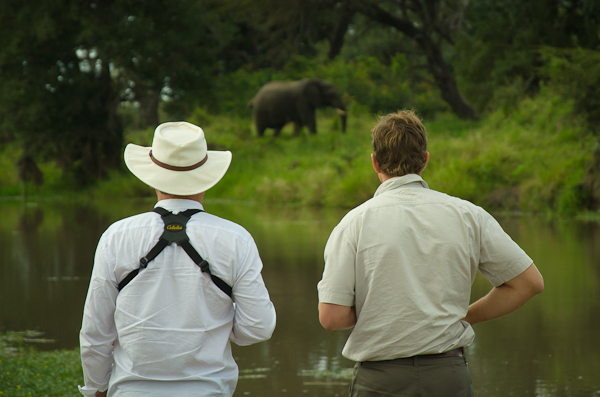






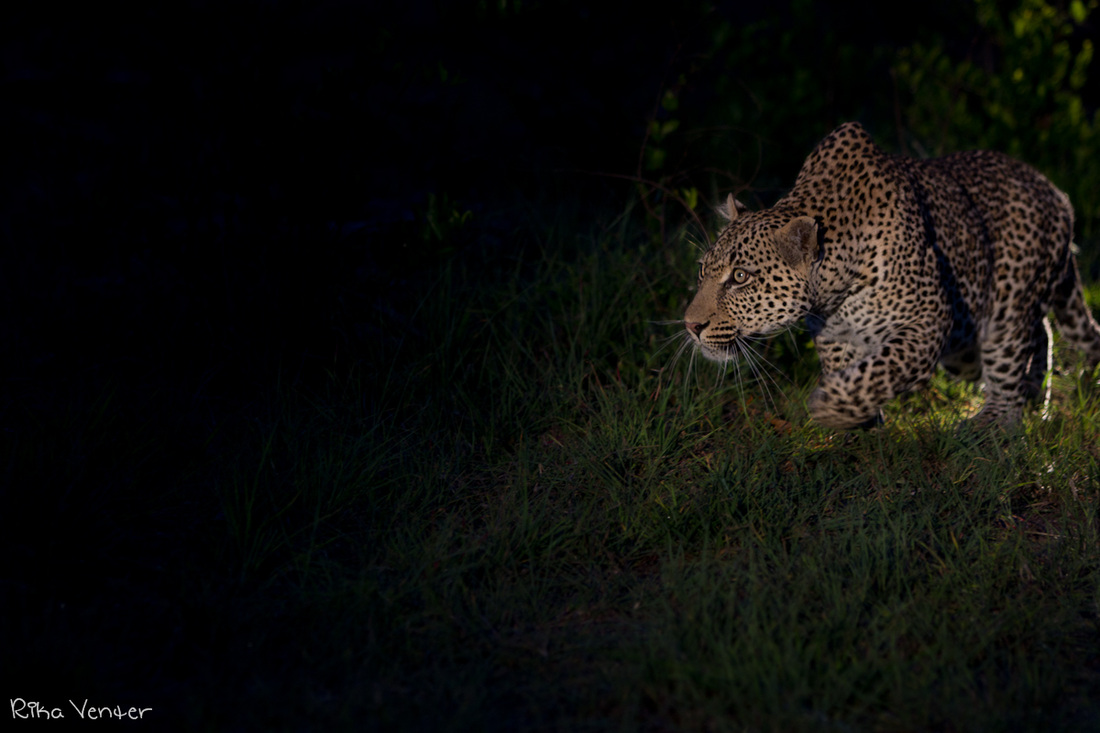
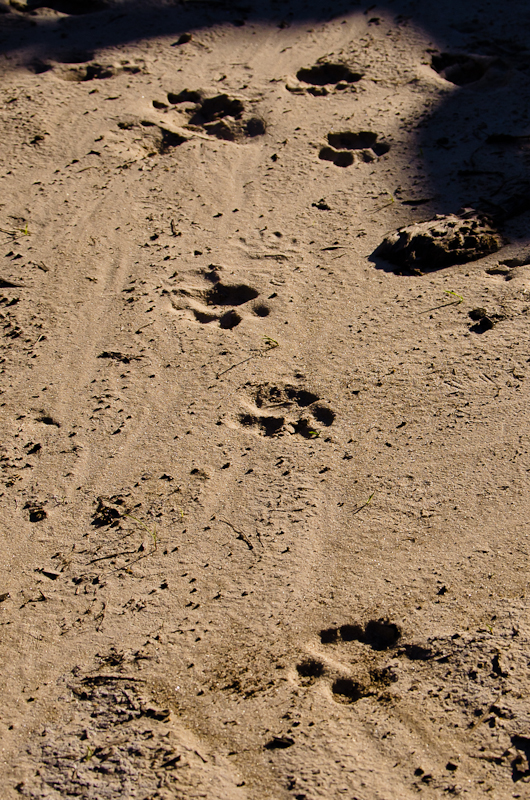


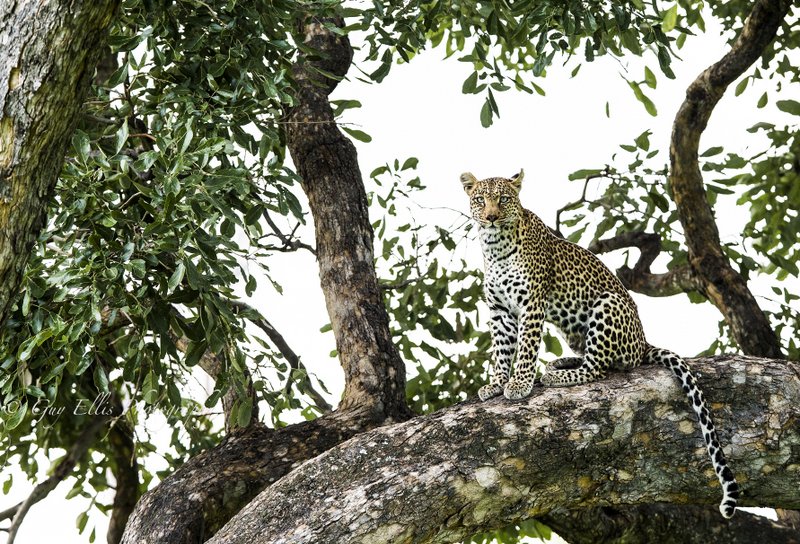






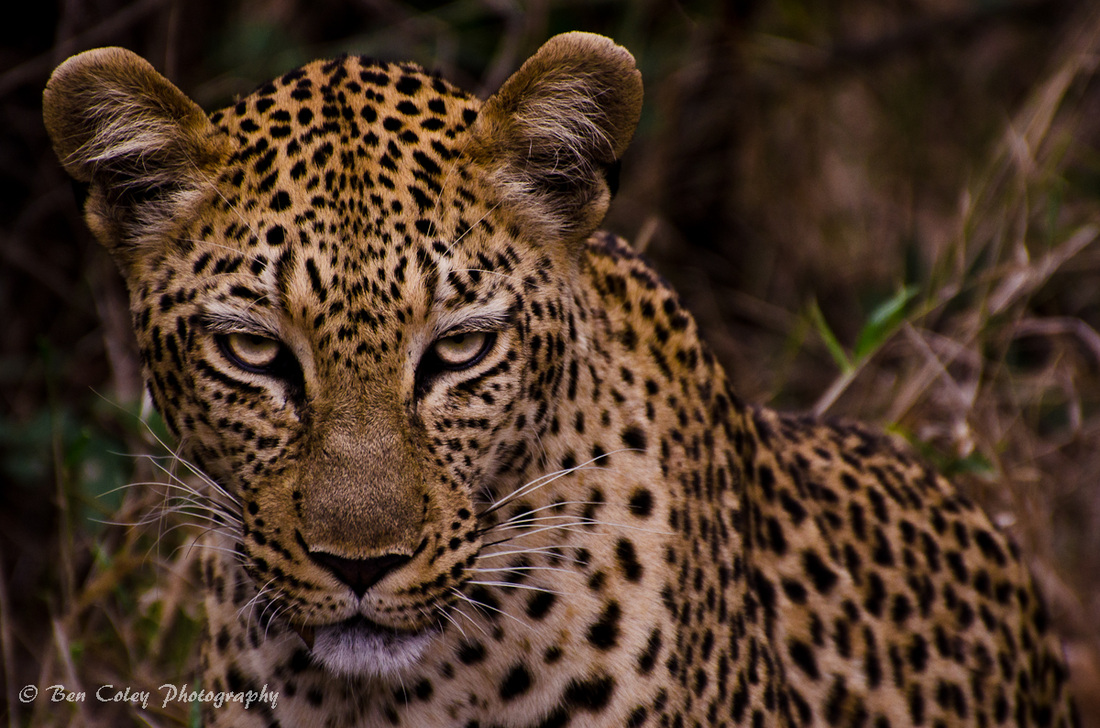

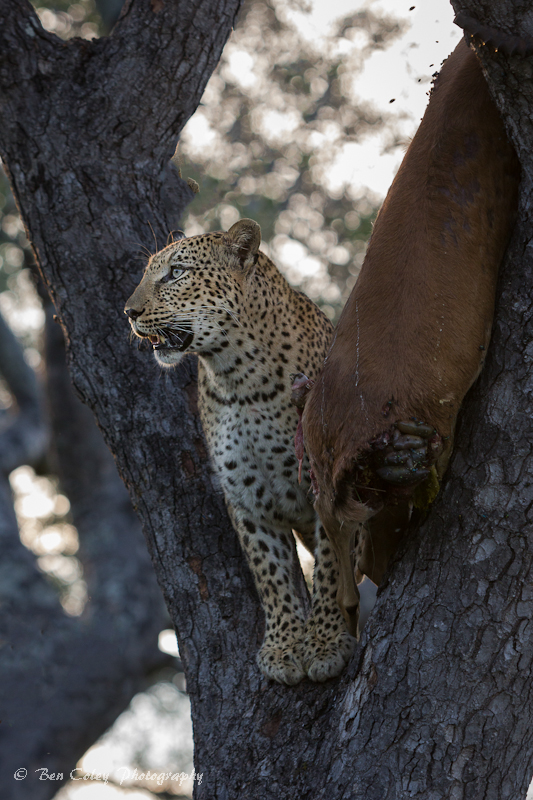

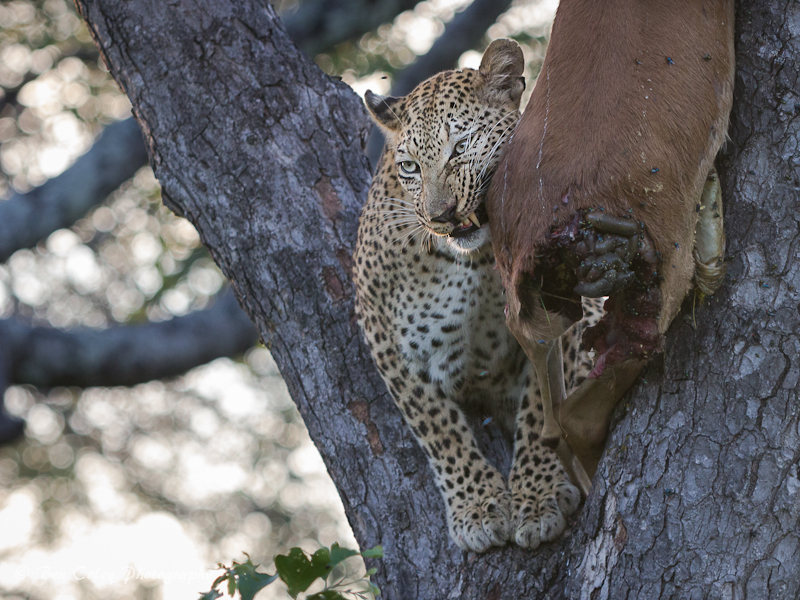







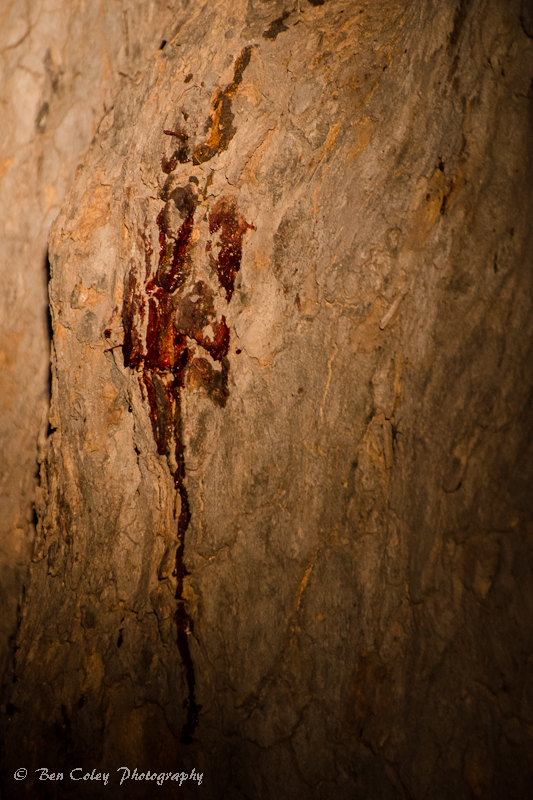










 RSS Feed
RSS Feed
